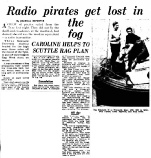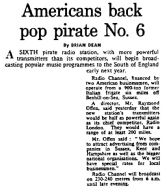







|
1960s |
|
|
|
|
|
(Anchored off the Netherlands, target audience Britain) |
|
|
|
(Anchored off Britain, target audience Britain) |
|
|
|
(Anchored off Britain, target audience Britain) |
|
|
|
(Positioned off Britain, target audience Britain) |
|
|
|
(Anchored off Britain, target audience Britain) |
|
|
|
(Anchored off Britain, target audience Britain) |
|
|
|
(Positioned off Britain, target audience Britain) |
|
|
|
(Positioned off Britain, target audience Britain) |
|
|
|
(Anchored off Britain, target audience Britain) |
|
|
|
(Positioned off Britain, target audience Britain) |
|
|
|
(Positioned off Britain, target audience Britain) |
|
|
|
(Positioned off Britain, target audience Britain) |
|
|
|
(Positioned off Britain, target audience Britain) |
|
|
|
(Anchored off Britain, target audience Britain) |
|
|
|
(Anchored off Britain, target audience Britain) |
|
|
|
(Anchored off Britain, target audience Britain) |
|
|
|
(Anchored off Britain, target audience Britain) |
|
|
|
(Positioned off Britain, target audience Britain) |
|
|
|
(Anchored off Britain, target audience The Netherlands) |
|
|
|
(Anchored off Britain, target audience Britain) |
|
|
|
(Anchored off Britain, target audience The Netherlands) |



















































|
|
The Voice of Slough/ Radio LN/Radio ELB/GBLN |
|
|
GBOK |
|
|
Radio Rag (Leeds University) |
|
|
Radio Rag (Newcastle University) |
|
|
Radio Free Yorkshire |
|
|
Radio Albatross |
|
|
Radio Red Rose |
|
|
Radex |
|
|
Radio City (West) |
|
|
Radio Pamela |
|
|
Radio Channel |
|
|
Radio Freedom |
|
|
Radio Manchester |
|
|
UKGM |
|
|
Radio 390 North and Radio 390 VHF (FM) |
|
|
Radio Kent |
|
|
Radio East Anglia |
|
|
Radio Aberdeen/Kings Radio |
|
|
Radio Concord |


















